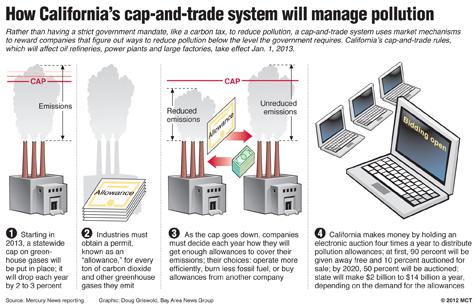With the recent election and Superstorm Sandy drawing close attention to climate change, carbon emission limits are placed back on the national agenda. Greenhouse gases could be linked to climate change.
The greenhouse effect is caused by heat buildup in the atmosphere due to the presence of greenhouse gases like carbon dioxide, methane and water vapor. California is the first state to take a step towards limiting greenhouse gases.
The state is holding an auction, to initiate its “cap and trade” program, selling carbon emission programs. The cap and trade program is a policy to limit the amount of heat-trapping gasses released by manufacturers, refineries, and other large emitting businesses. Companies can purchase carbon permits from companies that have extras, which is the “trade” part of the “cap and trade” program.
On Tuesday, November 13th, the California Chamber of Commerce filed a lawsuit to stop the California auction of emission permits. It was argued that the state had exceeded it’s authority in making the program a revenue generator. A program like this could generate up to $1 billion a year.
However, the cap and trade program will serve as a role model for other states, seeing that California is accountable for 3% of global greenhouse gas emissions. The chairwoman of the California Air Resources Board, Mary Nichols, believes that California’s overall impact is small but important.
Nichols said, “What we do will not solve the problem. But we want to demonstrate that this type of system can work.”
AP Environmental Science Teacher, Ms. Vogel, commented on the issue of greenhouse gases and what should be done, “I think it’s really hard to ignore global warming when the changes in weather and oceanic circulation patterns are beginning to directly impact us, like Hurricane Sandy. By taking preventative steps, we may be able to reduce the acceleration of the rate that warming is occurring at the moment. Fortunately for us, California tends to take on the difficult challenges of pioneering many of the environmental laws so it is to our benefit that they implement it and revise it until it is refined to a point where the automotive industry is able to produce low emission products for a profit and consumers are able to and want to participate at affordable prices. Once California has successfully implemented such a limit, I think lawmakers and citizens in Pennsylvania will be more receptive to the idea.”
Will California’s efforts work? Will more states follow in California’s footsteps to limit emissions? With the
cap and trade program, only time will tell.


